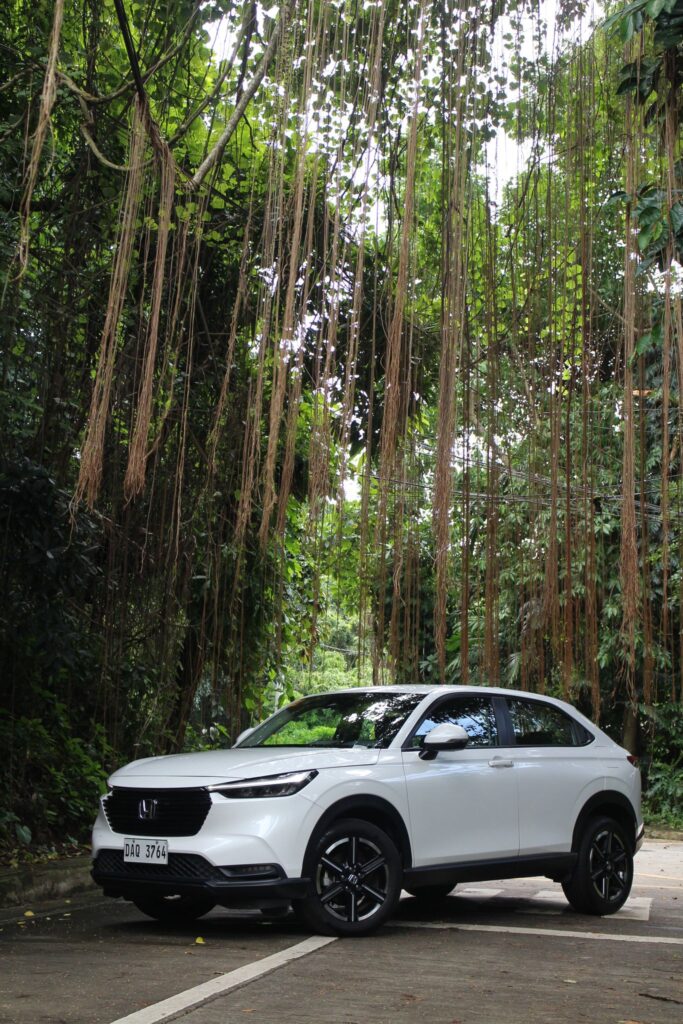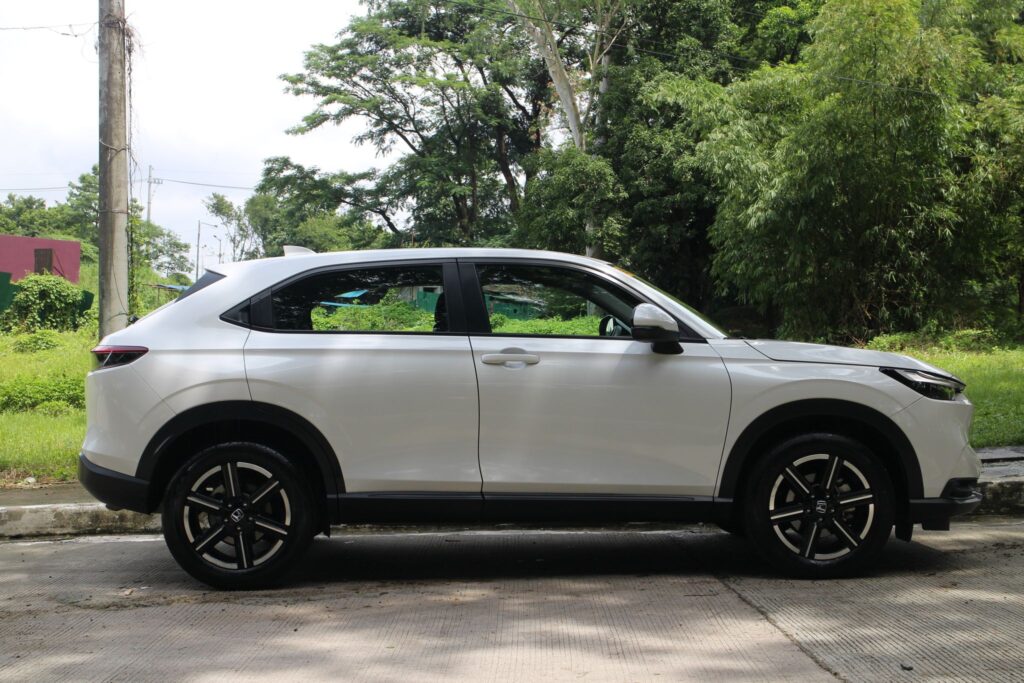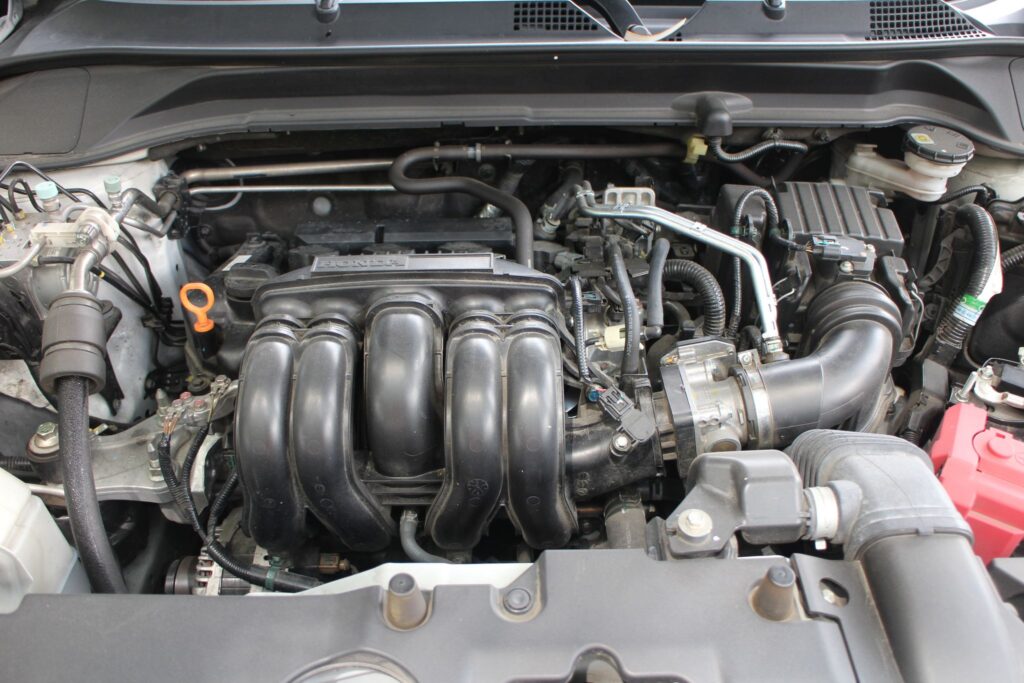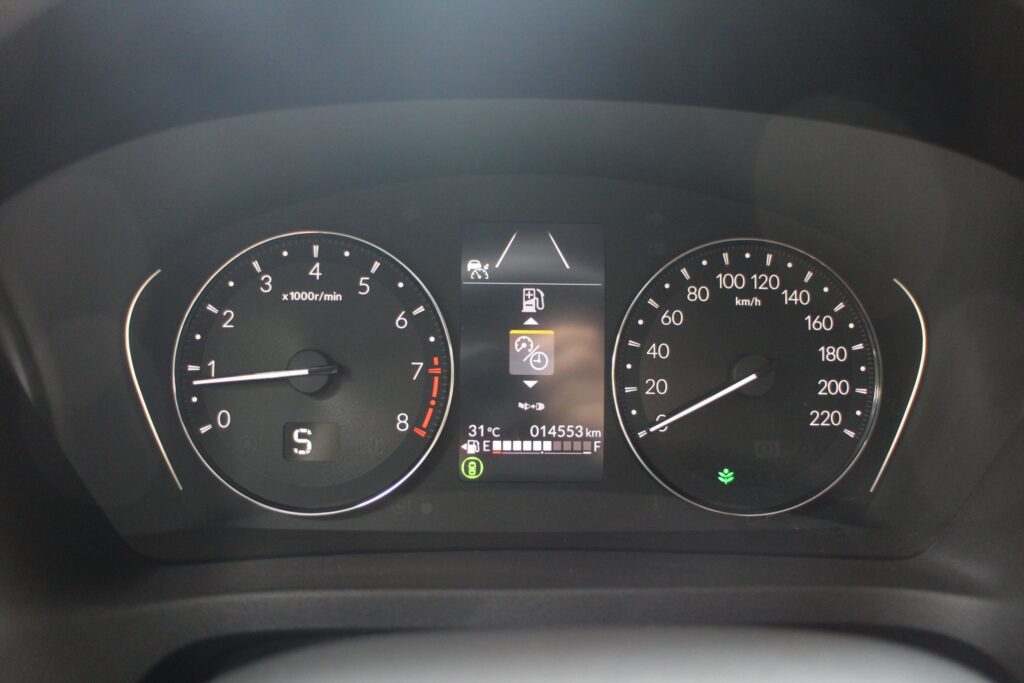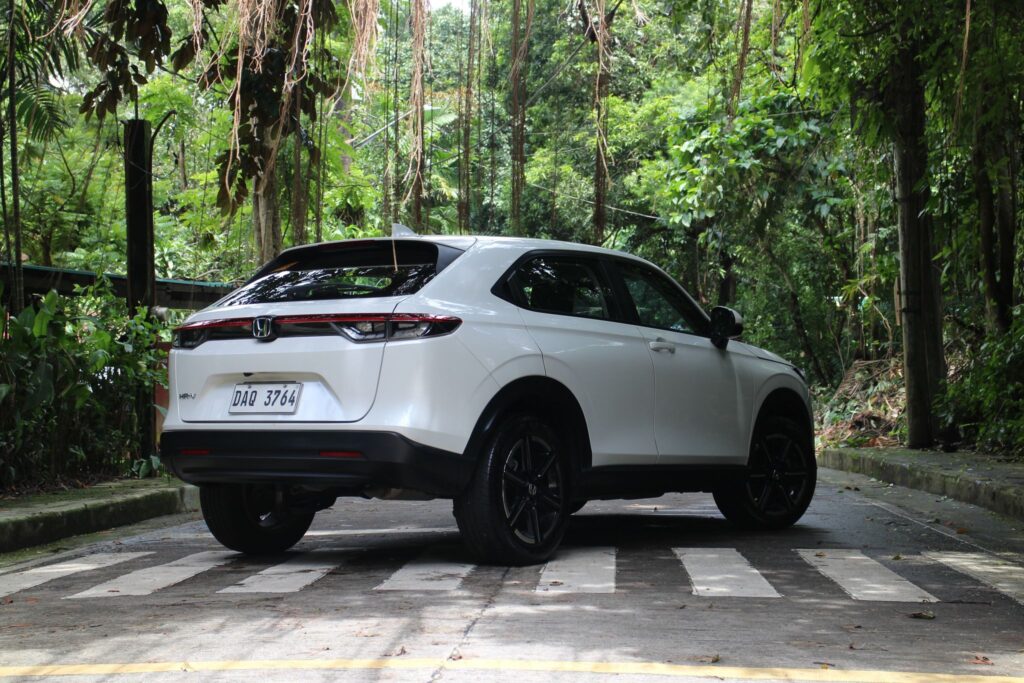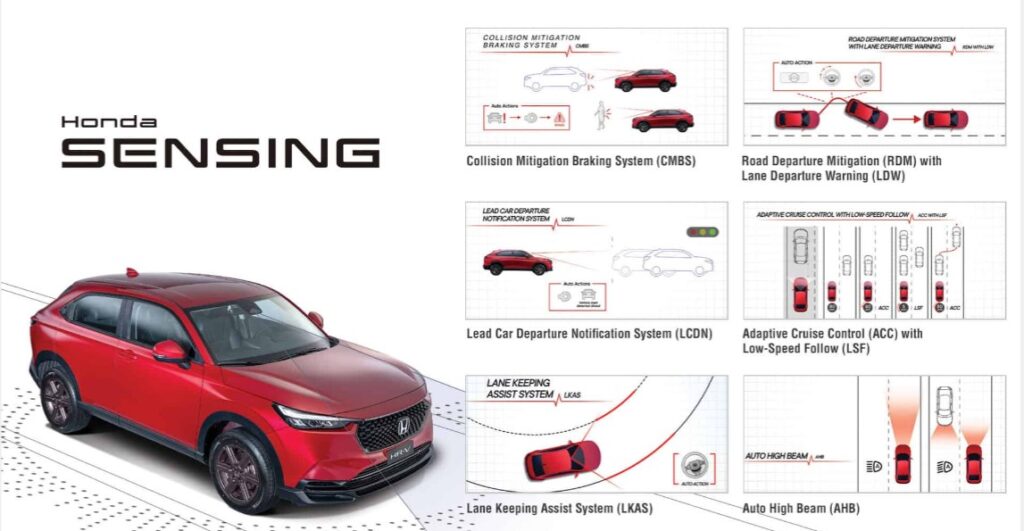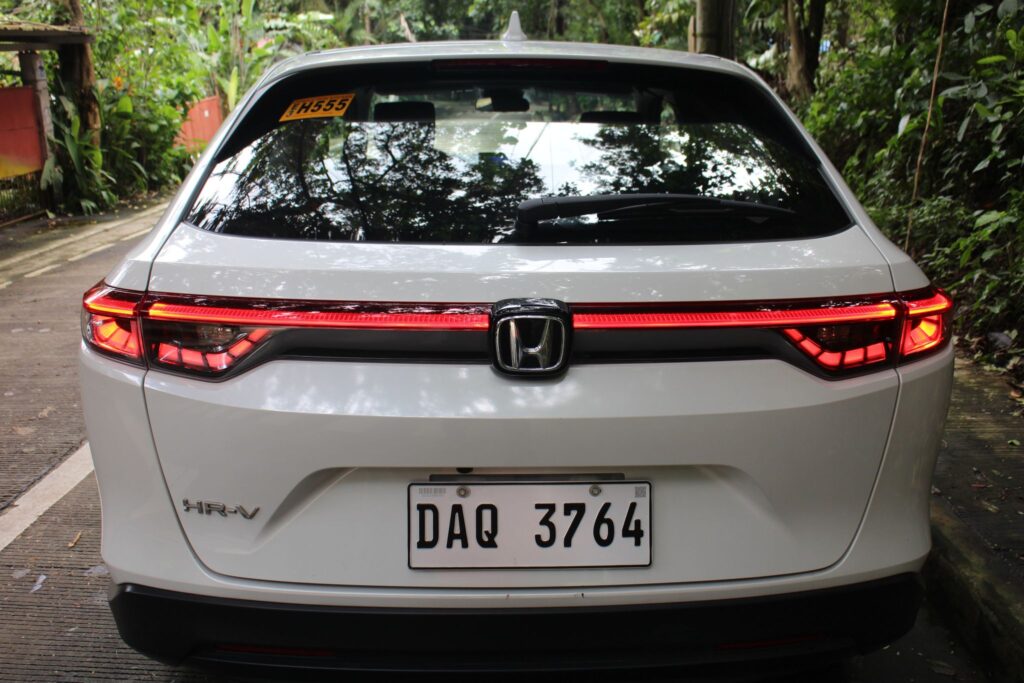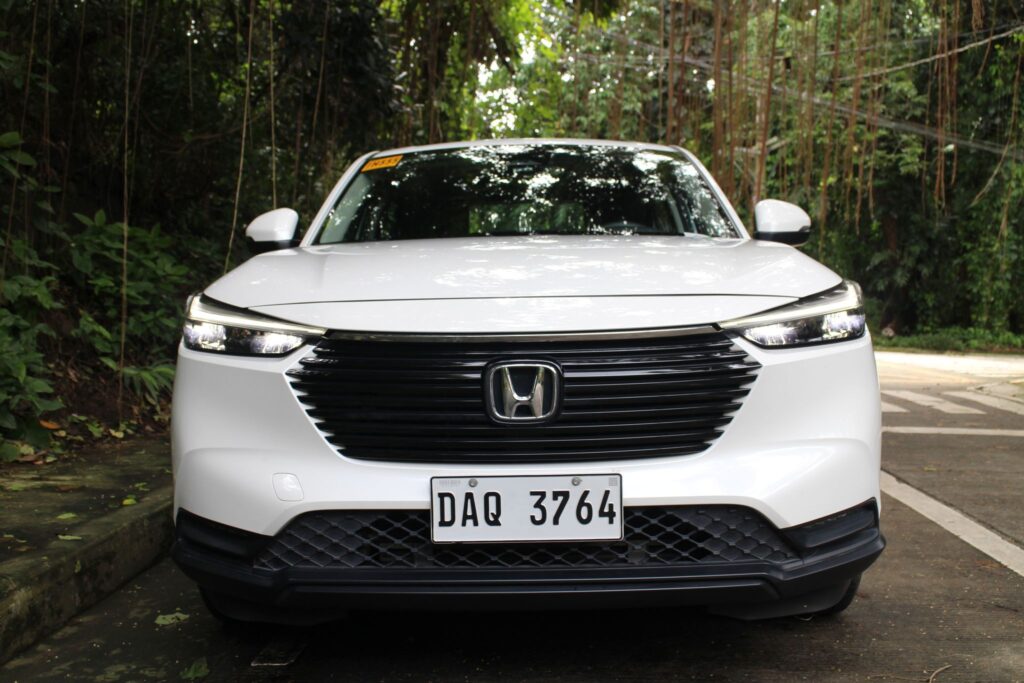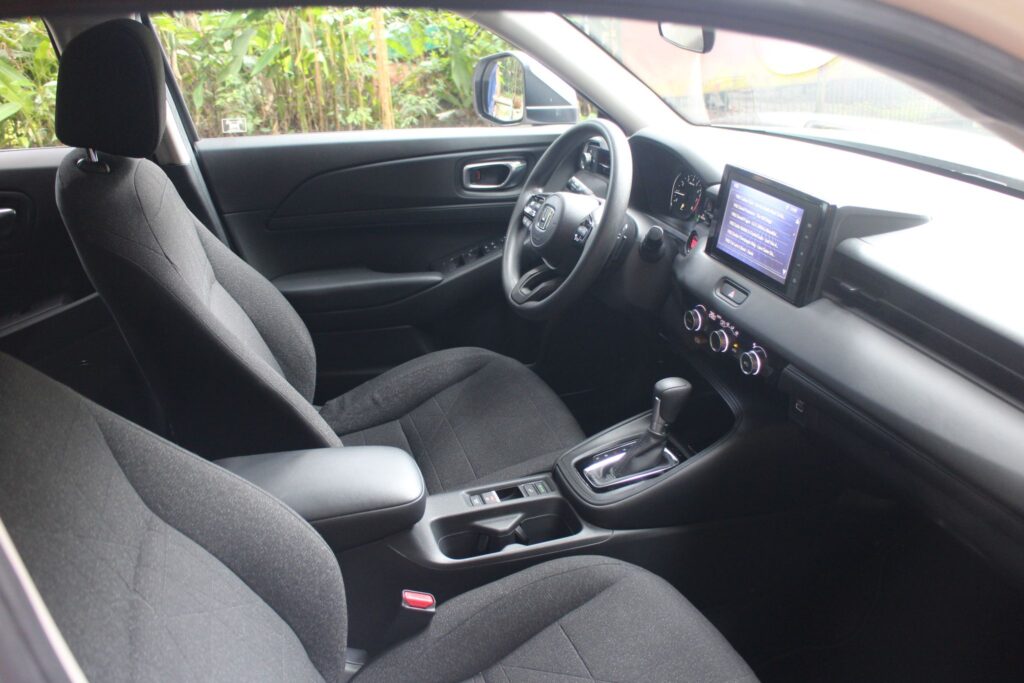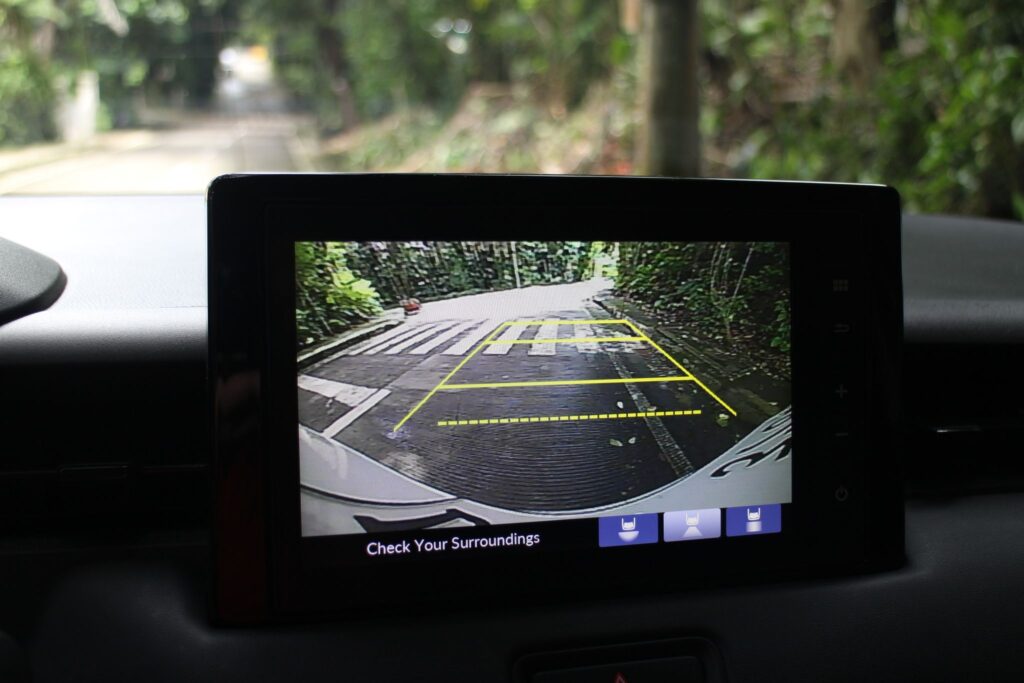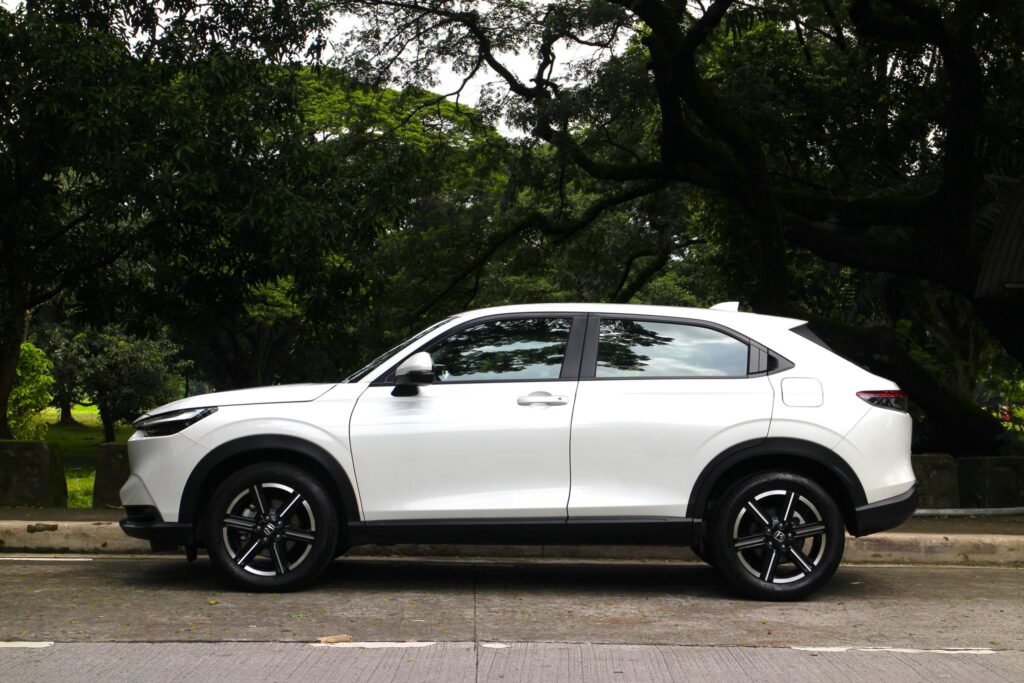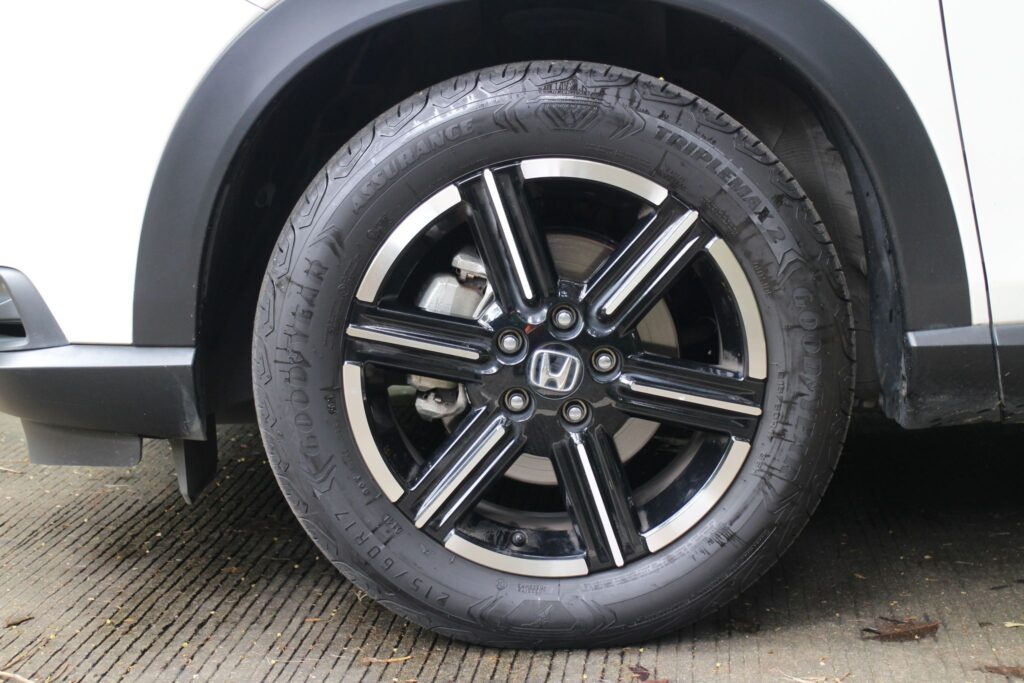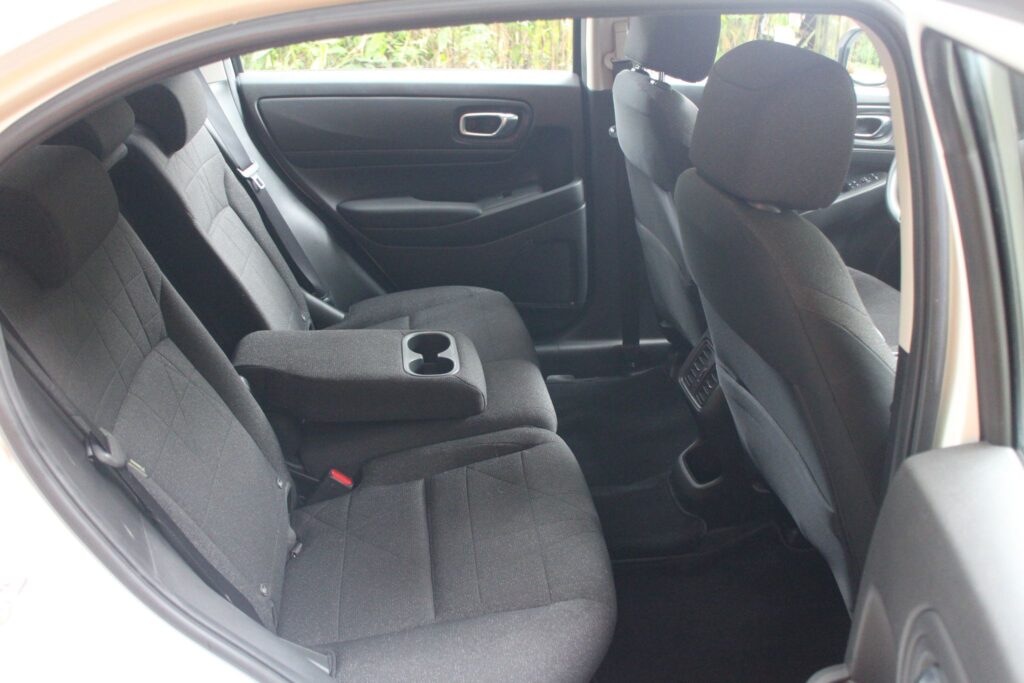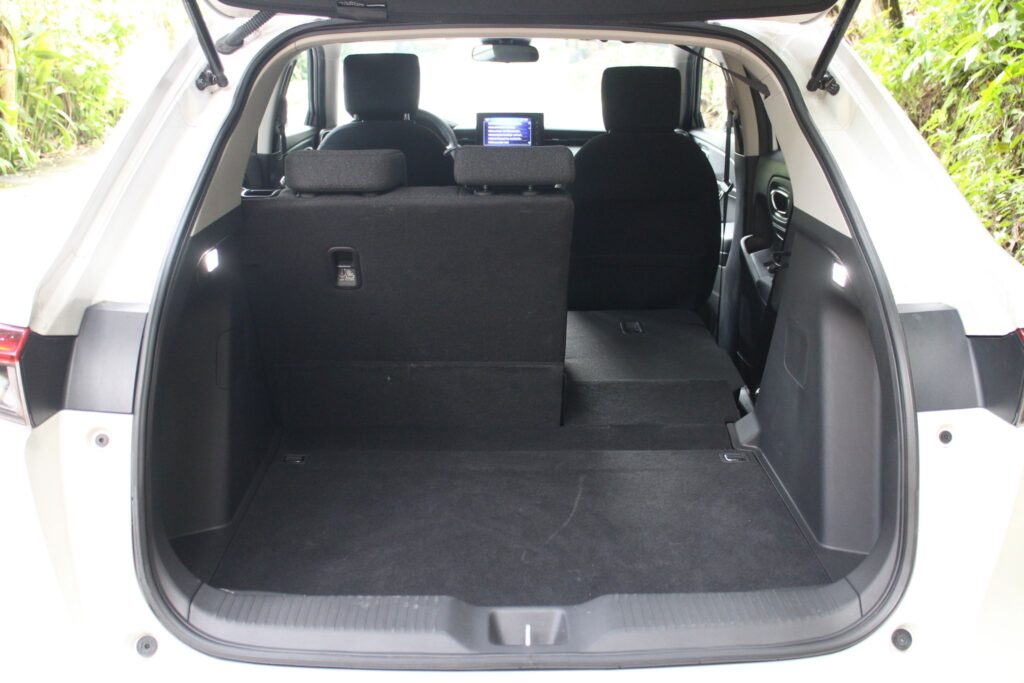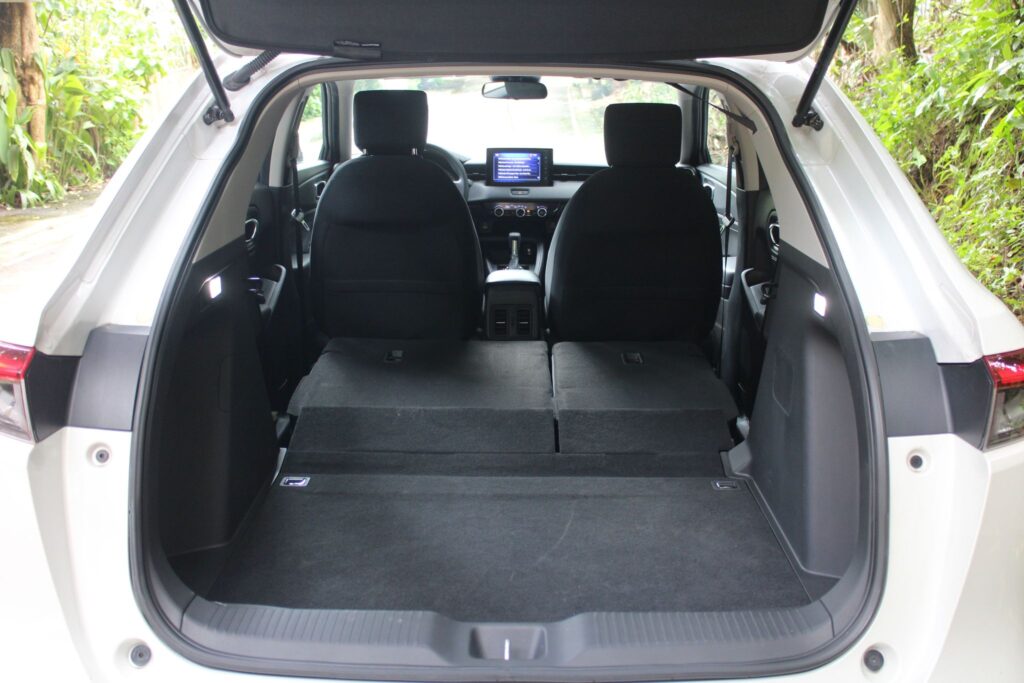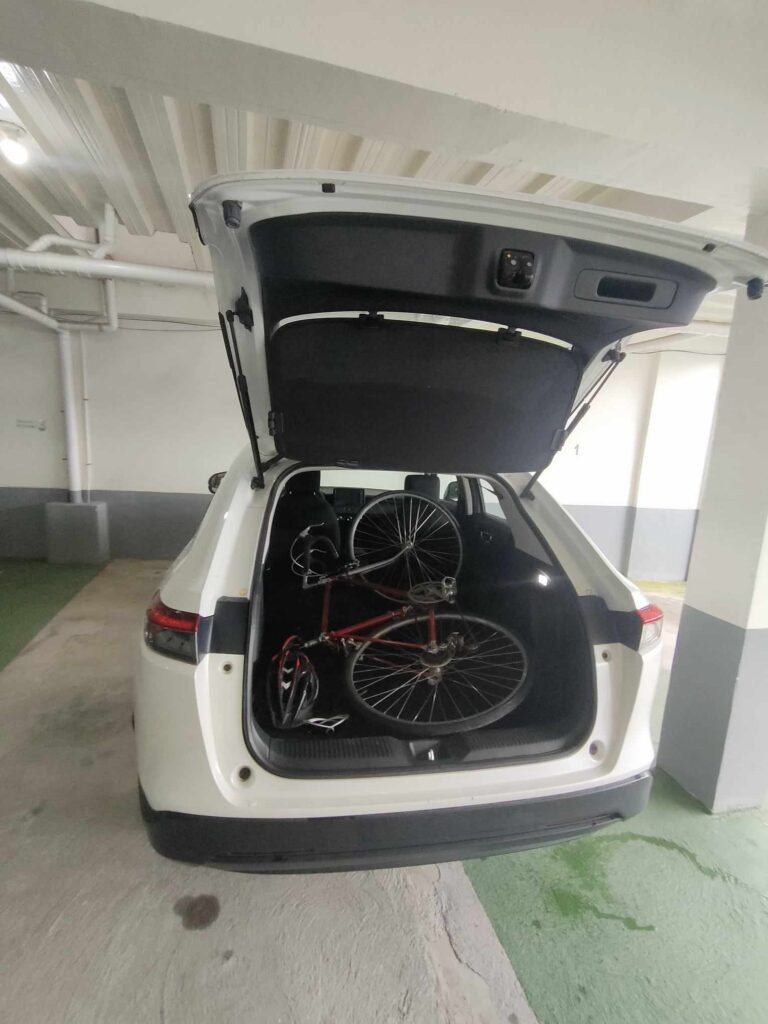When Colene Jalalon of Honda Cars Philippines, Inc. (HCPI) sent me a message that they’ll be sending me the latest Honda HR-V for a weeklong test drive, I was expecting that they’ll lend me their top-of-the-line RS Turbo CVT Honda SENSING variant. After all, Honda cars have become popular because of their performance and I’ve been anticipating a drive of their turbocharged 1.5-liter VTEC engine with double overhead camshafts (DOHC), 16 valves (16V), and programmed fuel injection system (PGM-FI).
I was out when the media test drive unit was delivered and I was mildly disappointed when it turned out to be a Platinum Pearl White 2023 HR-V S CVT Honda SENSING model instead of an Ignite Red Metallic RS Turbo HR-V. Instead of a fire-breathing Turbo VTEC that delivers 175 horsepower and 240 Newton-meters of torque, my test drive was powered by a naturally-aspirated version of the 1.5-liter DOHC, 16V, PGM-FI engine, albeit with intelligent Valve Timing Electronically Controlled (i-VTEC), which is Honda-speak for variable valve timing and lift with computerized electronic control.
Expected Sportiness & Fun
Despite being a non-turbo engine, it churns out 162 hp and 145 Nm of torque, which is nothing to sneeze at when coupled to a lightweight 1,379-kilogram 5-door compact crossover sport utility vehicle (SUV) body. Honda engineers have done their homework with the continuously variable transmission (CVT) that they mated to this engine because it shifts imperceptibly smooth, especially when driving in ECON (economy) mode. This combination promises impressive fuel-efficiency which was often negated during my drive by sitting immobile in heavy traffic caused by the continuous monsoon rains.
However, when the traffic clears and there’s a long lonely stretch of road ahead, shifting to SPORT mode makes the HR-V feel more responsive and alive. The CVT automatically holds the gear much longer and revs the engine higher, which reminded me of the much-vaunted performance that is expected of a Honda. I’m not sure if it’s just me, but I’ve driven a lot of compact crossover SUVs and some of them felt lifeless – like they exist just to deliver its occupants from Point A to Point B. Despite lacking the turbo, this HR-V still felt sporty, which made the drive much more exciting and fun!
Safety is Always a Priority
Of course, I realized that HCPI didn’t lend me this HR-V so I can experience just its sportiness or its fuel efficiency but in order for me to experience their advanced Honda SENSING collision-free system. Equipped with a state-of-the-art wide-angle camera and a high-speed processing computer microchip, this system monitors and detects the behavior of the vehicles or pedestrians in front and provides timely, useful and helpful driving assistance to avoid collisions and accidents. Thankfully, I didn’t need the emergency assistance of Honda SENSING during the week the HR-V was with me, although it provided me with added confidence.
I was confident that the Collision Mitigation Braking System (CMBS) will apply the brakes automatically if and when the car in front suddenly stopped and I didn’t notice it, or when a pedestrian suddenly darts in front of the HR-V. Although I didn’t understand it at first, I found it helpful that the Lead Car Departure Notification (LCDN) was telling me the traffic in front has started moving. During a drive on the tollways, I was impressed that the Road Departure Mitigation with Lane Departure Warning (RDM/LDW) was beginning to intervene when it sensed that I was veering onto the side of the highway.
But Wait, There’s More…
I found it relaxing that the HR-V’s Adaptive Cruise Control with Low-Speed Follow (ACC/LSF) would allow me to drive on the Skyway (and its 60 km/h speed limit) without stepping on the accelerator or the brakes. I find it reassuring that its Lane Keeping Assist System (LKAS) was actually intervening to ensure that the HR-V stays in its lane. My pet peeve are drivers who do not dip their high beam headlights and blind motorists on the opposite lane and Honda SENSING’s Auto High Beam (AHB) makes sure that I do not become another driver’s pet peeve.
While Hill Descent Control (HDC) is now common among modern vehicles, I’m glad that the HR-V has this feature along with Agile Handling Assist (AHA), which applies the brakes of the inner wheel to maintain vehicle stability when negotiating twisty curves and tricky turns. Of course, it also helps that the HR-V has a 5-Star ASEAN NCAP rating, which in addition to the front and side airbags, seatbelts and reminders, ensures the safety of the occupants in the extreme case of a collision or accident.
Ideal Compact Crossover SUV
I began to appreciate this HR-V S CVT variant even more when I learned that its price is P350,000 lower than the RS Turbo CVT I dreamt of driving. The S and RS Turbo variants share almost the same mechanical bits except for the RS’s turbo engine, larger 18-inch wheels and slightly fatter tires, and more luxurious appointments. But they share the svelte body that’s around 4.4 meters long, 1.8 meters wide and 1.6 meters high. They have the same 2.6-meter wheelbase and 181-millimeter ground clearance, as they have the same 40-liter fuel tank.
The steering is similarly easy because of electric power assist while the suspension is supple yet sporty thanks to McPherson struts in the front and an axle in the rear. Braking is sure and fade-free with ABS-assisted disc brakes at all four corners while grip is excellent thanks to meaty Goodyear Assurance Triplemax 2 215/60R17 tires mounted on 6-spoke 5-lug 17-inch alloy wheels. I further appreciated the HR-V with its ULT (Utility, Long and Tall mode) rear seats with armrests, especially since I can fit a classic road bike with its 60/40 split backrest folded down.
Let’s just say that the S-variant I’ve test-driven is the HR-V for the more matured performance enthusiast while the RS is for the younger set. That it’s a relative bargain at P1,389,000 is an additional point for budget-conscious car-nuts like me. Overall, I feel that people with an active lifestyle and a need for a compact SUV but with a keen eye on their budget will not go wrong with the 2023 Honda HR-V S CVT. It simply makes sense… and appeals to our sensibilities. (With apologies to Jane Austen’s classic novel.)
Specifications
Model: 2023 Honda HR-V
Classification: FWD 5-door SUV
Price: P1,389,000
Engine type: DOHC 16V i-VTEC inline 4-cylinder with PGM-FI
Displacement: 1,498 cc
Maximum power: 162 hp (121kW) @ 6600 rpm
Maximum torque: 145 Nm @ 4300 rpm
Transmission: CVT
Steering: Electric power steering
Suspension: Front McPherson strut, rear axle
Brakes: Front ventilated discs, rear solid discs
Wheels: 17x7J 6-spoke 5-lug alloy
Tires: 215/60R17
Wheelbase: 2610 mm
Overall length: 4385 mm
Width: 1790 mm
Height: 1590 mm
Ground clearance: 181 mm
Fuel tank capacity: 40 liters
Rear cargo storage: 377.8 liters
Curb weight: 1379 kg
 Power Wheels Magazine A Notch Above
Power Wheels Magazine A Notch Above

